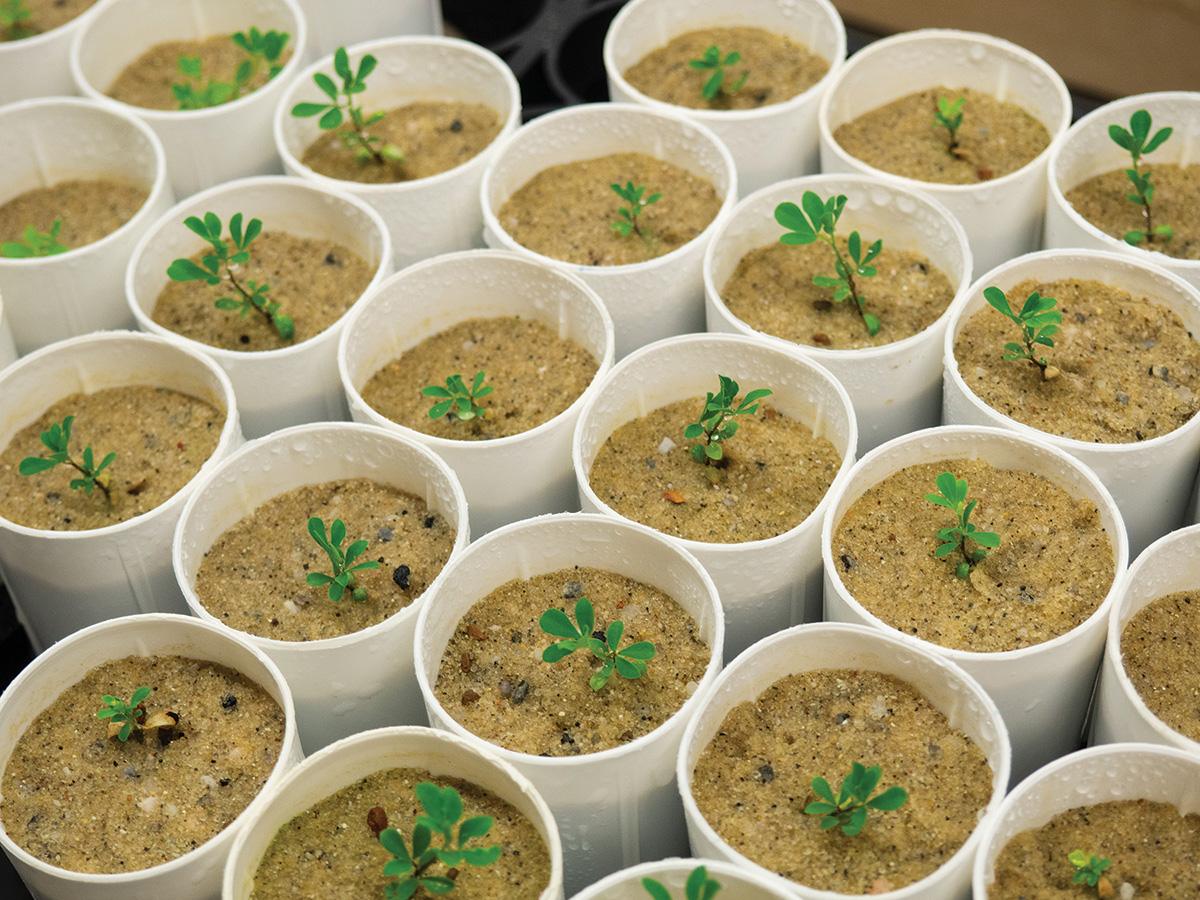
Photo by Clara Mokri
Weaving through soil and root systems, arbuscular mycorrhizal (AM) fungi connect plants that may live yards apart. The fungi and plants form mutually beneficial relationships, wherein fungi pass on nutrients and water to plants in exchange for sugar and fat. The network of fungal tubes forms underground infrastructure to transport carbon, water, and essential nutrient between competing trees. In an article for Bay Nature magazine, PhD student Lorenzo Washington discusses the role and history of AM fungi in forest community development.
Part essay and part science, the piece expertly explains complex concepts related to Washington’s research in an entertaining and accessible way. Weaving through descriptions of the “Wood Wide Web,” and the “promiscuous relationship” between plants and AM fungi, his writing paints a picture of an entire world beneath our feet that most people never consider.

Lorenzo Washington grows Lotus japonicus to study plant wall genes. Photo courtesy Lorenzo Washington.
Washington also describes the opportunity to incorporate fungal organisms into agriculture and ecosystem management. "Whether we’re thinking about ecosystem dynamics or want to ask a basic exploratory question involving plants, knowing about AM relationships helps us account for all the moving parts of a system," writes Washington. "In the same way that discoveries of the inner workings of photosynthesis drastically altered our understanding of plant function, discoveries involving AM fungi could provide entirely new insight and opportunities for innovation."
In the Department of Plant & Microbial Biology, Washington studies plant cell walls and plasma membranes. His work identifies the ways in which the two influence the creation and maintenance of beneficial microbial relationships in root systems.
Read Washington's article in Bay Nature.
